The Beauty and Pollinator Benefits of Asters and Goldenrods
by Heather McCargo
Asters and goldenrods are some of our most recognizable late season wildflowers. Asters range in colors from blue, purple, pink to white, and goldenrods have abundant yellow flower clusters. These two wildflower groups brighten and enliven the end of season landscape, from tidy gardens to meadows and woodland edges.
Asters and goldenrods attract loads of late season pollinating insects. In the wintertime, they provide food and habitat for many birds and small animals that feast on the seeds and find shelter in the dried stalks. Research by entomologist Doug Tallamy of University of Delaware lists asters and goldenrods as the wildflowers that support the most species of butterflies and moths. Deer usually avoid asters and goldenrods.
Below are some asters and goldenrods in Maine that are deserving of space in our urban and suburban yards. All of these are easy to grow from seed, and offer a very inexpensive way to add a diversity of plants to your landscape. Aster and goldenrod seeds should be sown outside in late fall or early winter. For step-by-step instructions to seed sowing, please see Autumn and Winter Seed Sowing in Six Easy Steps.
Shady Locations
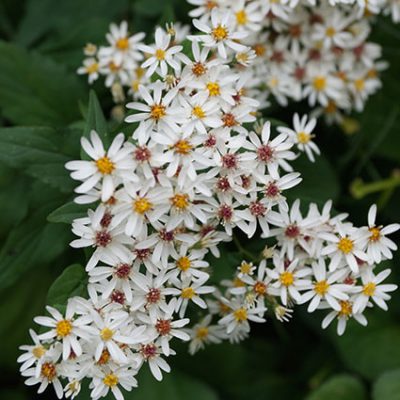 White wood aster (Eurybia divaricata)
White wood aster (Eurybia divaricata)This shade-loving, drought-tolerant woodland aster begins blooming in late August with bright white petals and centers of yellow and red. Dark green shiny foliage is low and attractive earlier in the season and spreads slowly to form compact patches in moist to dry soils. White wood aster is an excellent landscape and garden plant. 12-18”
 Large-leaved wood-aster (Eurybia macrophylla)
Large-leaved wood-aster (Eurybia macrophylla)This is a late summer-blooming woodland aster with pale lavender flowers and yellow centers. Large pale green leaves spread quickly to form an attractive groundcover in shady, dry to medium-moist soils. Not for small garden spaces. Foliage 6” with 18” flower stalks. The leaves of this species are edible (See NATIVE GREENS: Grow these delicious edible vegetables in your own back yard).
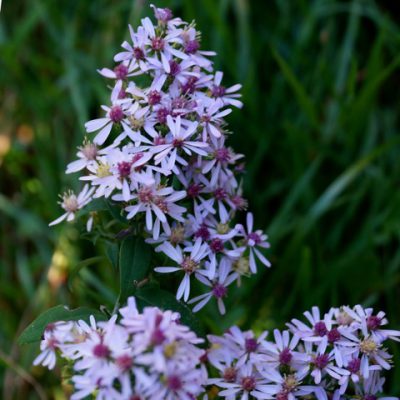 Blue wood-aster (Symphyotrichum cordifolium)
Blue wood-aster (Symphyotrichum cordifolium)Blue wood-aster is a fall-blooming aster with billowy lavender blue flowers and heart-shaped leaves. This plant thrives in the woodland edge, or disturbed areas with poor soil. It makes a great urban plant in moist to dry infertile soils. 2′
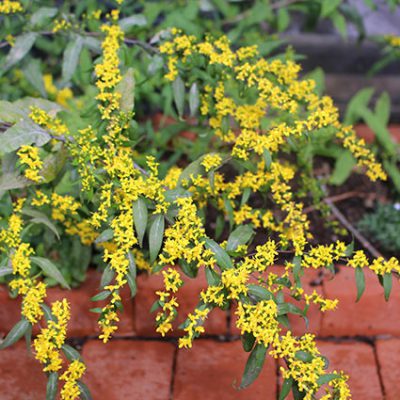 Blue-stem goldenrod (Solidago caesia)
Blue-stem goldenrod (Solidago caesia)Blue-stem goldenrod is lovely for shady gardens and landscapes. In September and October delicate arching stems are covered with tiny yellow flower clusters. A clump-forming species, it is very well behaved and deserving of a place in shady gardens in moist to dry soils. 18″
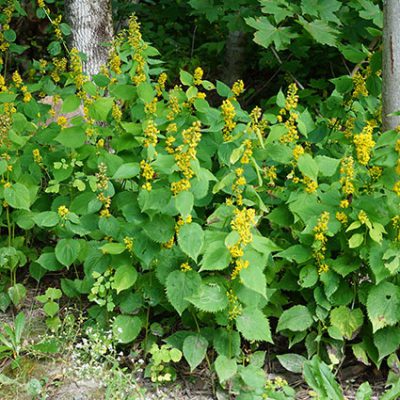 Zigzag goldenrod (Solidago flexicaulis)
Zigzag goldenrod (Solidago flexicaulis)A tidy, shade-loving goldenrod with charming oval leaves, zigzag goldenrod has serrated leaf edges and short spires of golden yellow flowers that bloom in the fall. A well-behaved, garden-worthy species that forms small patches in moist to dry soil with plenty of organic matter. Low foliage until later in the summer, then reaching 2′ in bloom.
Sunny Locations
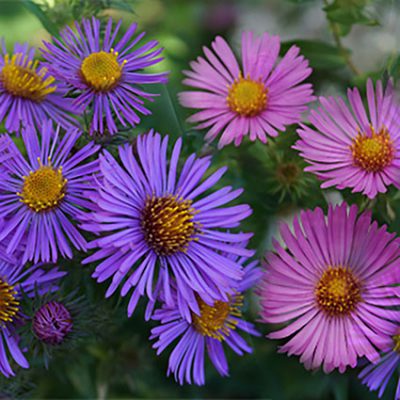 New England aster (Symphyotrichum novae-angliae)
New England aster (Symphyotrichum novae-angliae)The New England aster is a fall-blooming meadow aster with bright purple or pink flowers with yellow centers. New England aster is an excellent garden and landscape plant in moist to dry soils. Stems can be pinched back in June and early July for a more compact garden plant. 2-5′
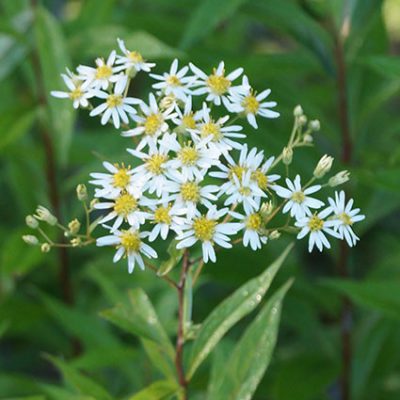 Tall white-aster (Doellingeria umbellata)
Tall white-aster (Doellingeria umbellata)The tall white-aster is a summer to fall blooming aster with large clusters of yellow-centered white flowers that brighten the late summer meadow. Best suited to meadows as this species spreads to become a large colony. Likes moist soil. 3-4′
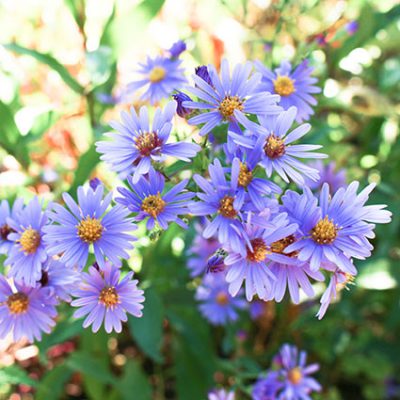 Smooth Blue Aster (Symphotrichum laeve)
Smooth Blue Aster (Symphotrichum laeve)Loose clumps of smooth blue-green foliage are covered with blue flowers with bright yellow centers. The smooth blue aster blooms from late summer to fall in dry soils, in full sun or part shade. 18″-3′
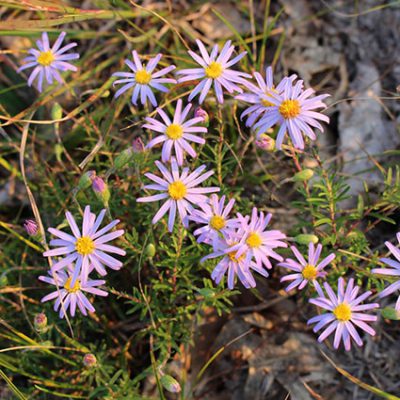 Flax-leaved stiff-aster (Ionactis linariifolia)
Flax-leaved stiff-aster (Ionactis linariifolia)This diminutive aster of dry sandplains, pine barrens and open acidic woods is a great plant for dry gardens, edges of patios, or sandy or gravelly meadows. In August and September lavender blue petals and pine needle-like foliage brighten up the landscape. Grows 8-12” in dry, sandy, or gravelly soil.
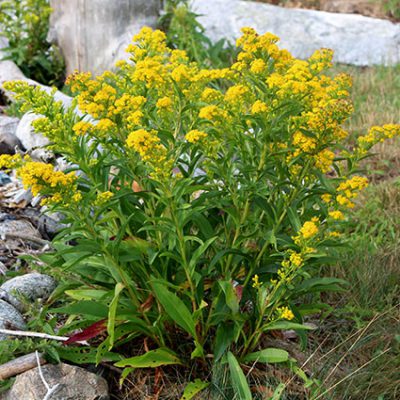 Seaside goldenrod (Solidago sempervirens)
Seaside goldenrod (Solidago sempervirens)Seaside goldenrod will tolerate conditions that are sunny and dry, as well as moist ditches, rain gardens, and seaside edges. The flowers form bright yellow clusters, and the clump-forming mass of pale green foliage stays neat all season. This goldenrod is tolerant of road salt. 2’
Native Gardening Blog
After removing disruptive introduced species, try planting these
Join Our Team!
Landscaping in partnership with native ecosystems is good for the planet. It’s good for us too.
Building Biodiverse & Climate-Resilient Habitats
Supporting Ash Protection Collaboration Across Wabanakik

